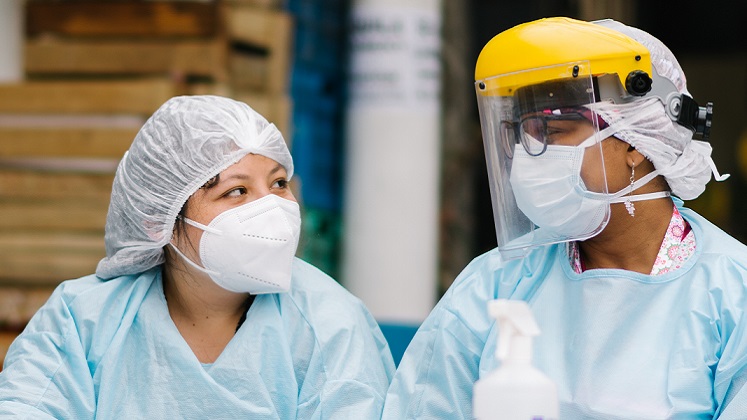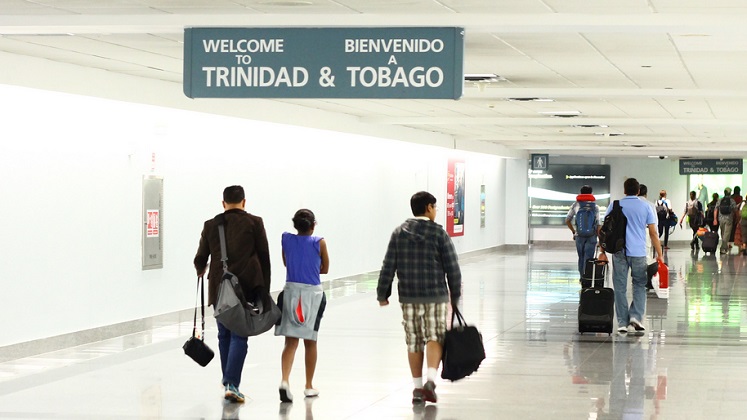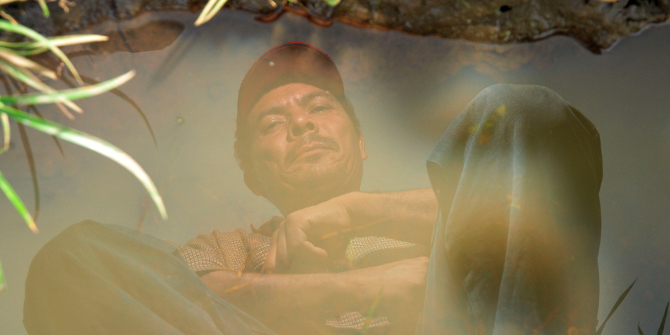 Ciudad Juárez operates as a necropolis where femicide legislation coexists with reductionist and patriarchal approaches to gender violence. The victims of killings and disappearances are presented as prostitutes, and those who investigate are seen to be staining the city’s good name. Mexico’s lax justice system and the free-trade zones of the maquiladora industry provide the enabling context, writes María Encarnación López (London Metropolitan University).
Ciudad Juárez operates as a necropolis where femicide legislation coexists with reductionist and patriarchal approaches to gender violence. The victims of killings and disappearances are presented as prostitutes, and those who investigate are seen to be staining the city’s good name. Mexico’s lax justice system and the free-trade zones of the maquiladora industry provide the enabling context, writes María Encarnación López (London Metropolitan University).
Of the 25 countries with the highest rates of femicide in the world, 14 are located in Latin America and the Caribbean. Mexico is ranked sixth for gender crimes, with a rate 15 times higher than the global average.
In Ciudad Juárez, 913 women have been reported murdered since 2010, and 3,000 women have gone missing since the mid-1990s. In 2017 alone, 86 femicides were reported, up 34% on 2016. Many now see this as an uncontrolled pandemic in the city and a central issue for social justice and human rights in Mexico.
Behind this pandemic there lies a strange kinship between neoliberal economic measures, violence driven by organised crime, a patriarchal approach to working women, and legal impunity around femicide in Mexico.

Ciudad Juárez: the capital of femicide
Borderlands are often characterised as wild frontiers, and Ciudad Juárez is no exception. The town is known as one of the most dangerous cities in the world, with thousands of deaths linked to in-fighting between cartels over control of the drug distribution throughout Mexico.
The National Citizen Femicide Observatory reports that six women are assassinated every day in Ciudad Juárez. Most victims – some as young as five years old – are found strangled, mutilated, dismembered, stabbed, and torched in vacant lots, stream beds, sewers, rubbish dumps, or the desert.
Signs of sexual assault or mutilation are common, with many bodies having had their breasts cut off. Some women are so badly beaten, disfigured, or decomposed that their remains cannot be identified.
Gender, justice, and impunity
Yet, 98% of cases go unpunished.
This is despite the fact that according to Mexico’s penal code femicide can mean 40 to 60 years in prison, a $2000 fine, loss of inheritance rights, and obligatory economic redress and public apologies to victims’ families.
Even massive demonstrations and candlelight vigils organised by the Women in Black and Not One Woman More movements, which sparked #NiUnaMas/#NiUnaMenos (‘not a single woman more/less’) protests against gender violence throughout Latin America, have been able to reduce impunity in Ciudad Juárez itself.
Local authorities and activists have taken another tack by creating the ‘I Am Not Alone’ app, which enables local women to make a quick-trigger distress call in the event of an attack or attempted kidnapping, but this only treats the symptom rather than the cause.

More worryingly, evidence shows that the lack of proper investigations into femicides is not seen as a problem. Families feel that the authorities tend to blame women for their own deaths, with local police and investigators often presenting these victims as prostitutes who lead double lives. Relatives are also accused of selling the bodies of the dead to the press, which is always hungry for stories of sex and violence along the Mexican border.
Those journalists that do choose to properly investigate femicide face terrible risks. There were over 100 work-related deaths of reporters in Mexico between 2000 and 2017, and 30 under current president Enrique Peña Nieto.
In September 2010, the local newspaper Diario de Juárez felt obliged to offer a truce to two drug cartels, which they saw as ‘the de facto authorities of this city’, following the killing of two of its reporters. In April 2017, the online news site Norte Digital announced its closure after the murder of its reporter Miroslava Breach: the accompanying editorial suggested that awareness-raising about violence in the city was inconvenient to those who dominate the public sphere in their own interests.
Maquilas and the patriarchal system
Another enabling factor for femicide is the intersection of gender and productive regulation in the special free-trade manufacturing zones known as maquilas, as women who walk the streets as part of their work in these zones are often taken for ‘public women’ selling sex.

The conceptual kinship between the notions of obrera (worker) and ramera (whore) at the Mexican border presents maquila workers as having ‘dissolute’ habits that challenge a simplistic code of behaviour befitting ‘good’ women.
In the same way that police local often do, popular discourse depicts young working women and missing girls as leading double lives: working in factories during the week and as prostitutes at the weekend to make extra money; taking part in beauty contests; dancing with ‘cualquiera’ (anybody) in nightclubs, bars, and brothels; drinking alcohol and taking drugs.
Feminist scholars and activists have called in the first instance for the government to take responsibility and end the killing of women in the city. But femicide in Ciudad Juárez is also enabled by patriarchal modes of production that legitimise despotism and the cruel, racist, and sexist treatment of working-class women. This system confers control over women’s sexuality to (male) factory owners, (male) criminals, and (male) authorities. Only a wider renegotiation of the self (amongst subordinated women) and the other (amongst men and male institutions) will allow women to escape the constraints of this system and live free from social prejudice and violence.
The pandemic of femicide in Ciudad Juárez must be placed in a national context of uncontrolled violence from organised crime, impunity, institutional corruption, and a patriarchal mentality. Contrary to official discourse, there is strong evidence that femicide in Ciudad Juárez is not a myth, its victims are not prostitutes, and their relatives do not aim to attack the ‘good reputation’ of the city. But a real reduction in female mortality in the city will also require a substantive change in modes of production, particularly with regard to the maquiladora industry. Only then will the perception of female workers improve, empathy with victims increase, and tolerance for impunity decline.
Presidential elections in July 2018 represent an opportunity for candidates to promote new ideas about gender, sexuality, and violence based on different values and principles, leaving behind the hegemonic masculine parameters. Given its extent, campaigns should also prioritise the problem of femicide so that the victims, their families, and women more generally are no longer presented as merely the vulnerable subjects of Mexico’s social structure.
Notes:
• The views expressed here are of the authors rather than the Centre or the LSE
• Please read our Comments Policy before commenting






¡Que horrible!Gracias por hacer que este artículo advierta al público sobre estos trágicos eventos. Mi corazón está con las familias de estas mujeres.